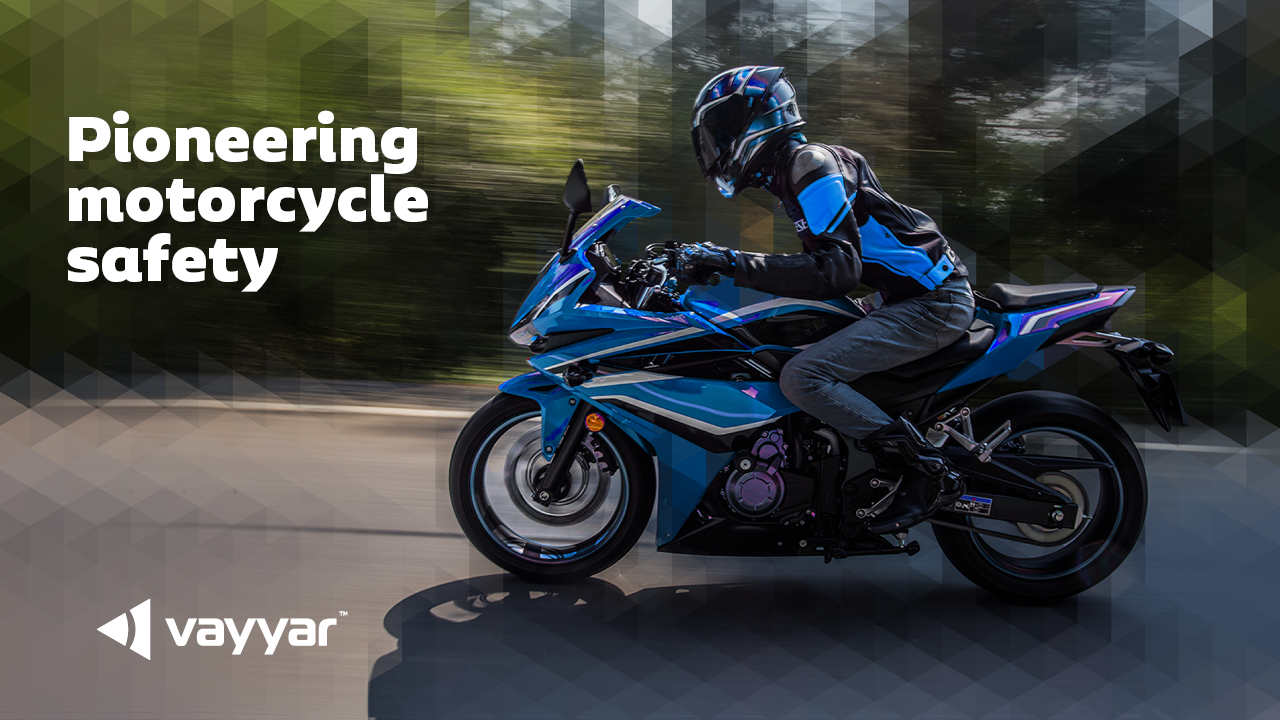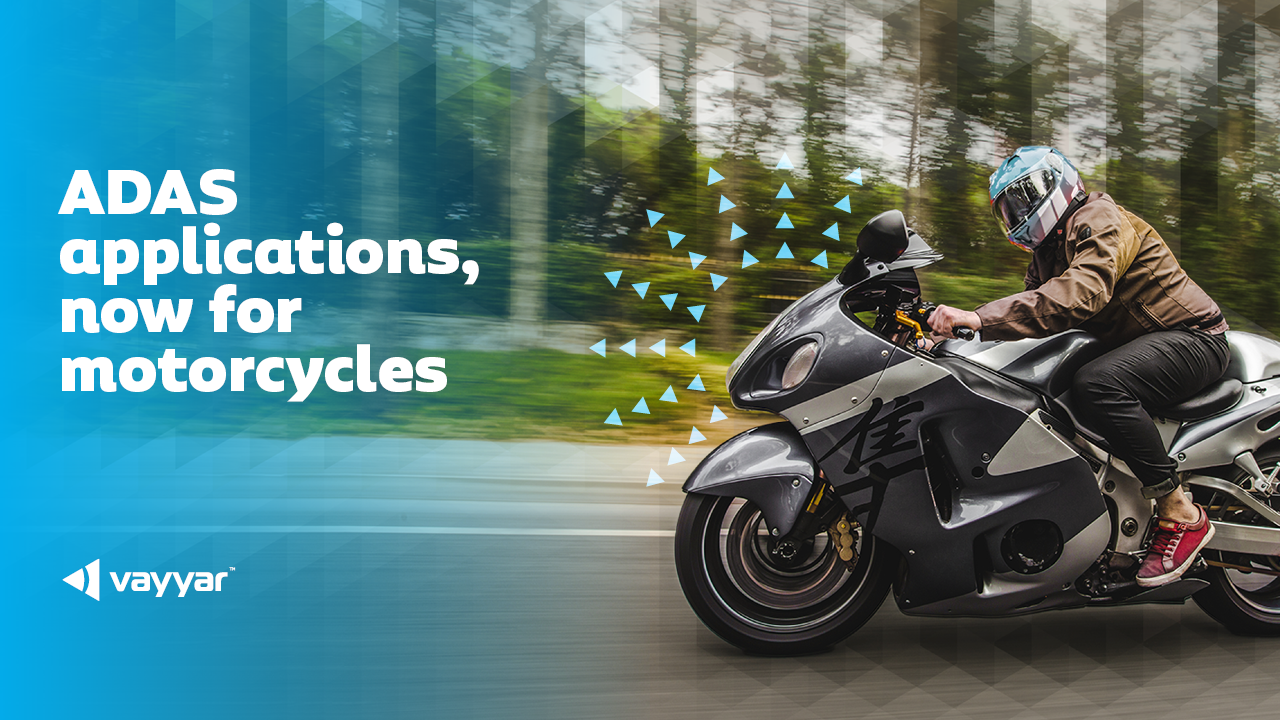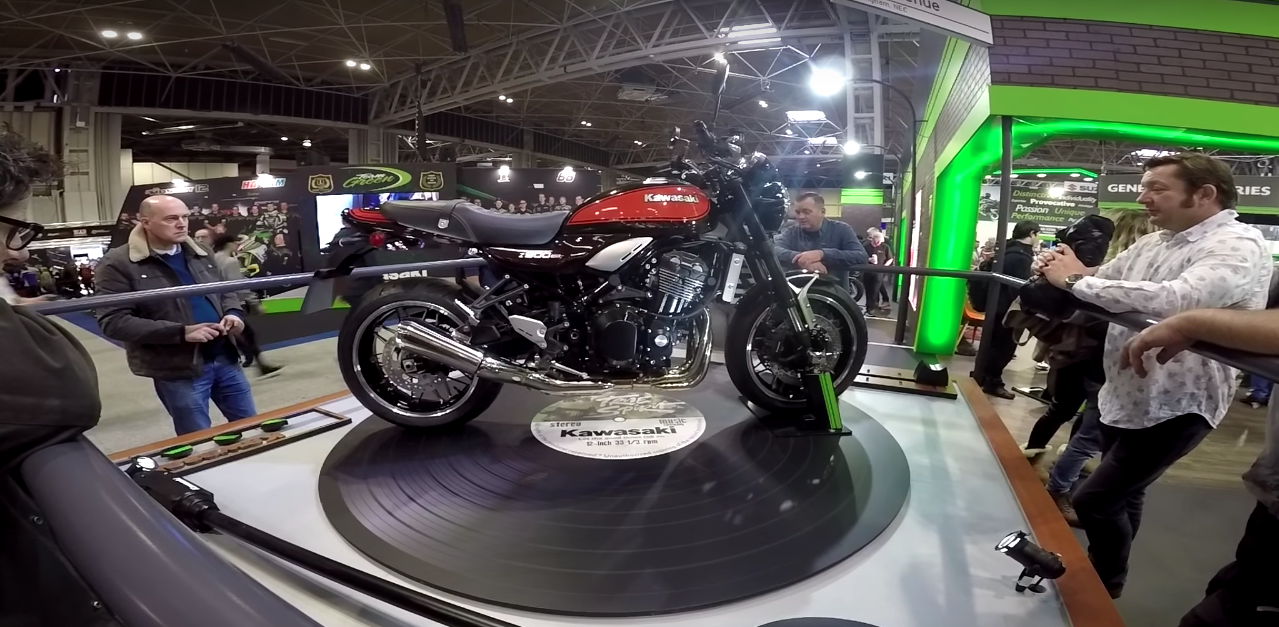Split-second Sensing for Motorbike Safety: 4D Imaging Radar for ARAS
ADAS for motorcycles, more commonly known as Advanced Rider Assistance Systems (ARAS), is now on the front line of the battle to protect lives.
.png?width=1600&aspect_ratio=16:9)
DEMAND for two and three-wheeled transportation is growing exponentially. Accelerating urbanization, the rise of the courier economy, and even a desire for socially distanced transport have led to a rapid increase in the number of motorbikes and scooters on the streets of Europe and the Americas, as well as the moped-packed megacities of Asia.
But the danger to riders is also rising, with a 15-21% increase in motorcycle collisions and fatalities over the past decade. Yet the most at-risk road users currently receive the least regulatory and technological protection. Motorcycle safety has remained essentially unchanged for forty years. The landmark Hurt Report inspired only a series of training and education programs and even today, there’s no equivalent of NHTSA or Euro NCAP standards for two-wheelers.
Because most motorcyclists travel at high speeds, frequently engage in lane-sharing, and lack the security of a roof or cabin, there’s a clear and growing need for split-second sensing that prevents collisions. For leading OEMs as well as top Tier 1s, the rising popularity of motorcycles and rapid advances in sensing technology present an unprecedented opportunity to evolve new systems that improve rider safety and protect lives.

Why Improving Safety is Harder on Two Wheels than Four
ADAS (Advanced Driver Assistance Systems) applications such as Blind Spot Detection (BSD), Lane Change Assist (LCA), Front and Rear Collision Warnings (f/rCW), and Adaptive Cruise Control (ACC) are in the vanguard of an automotive safety revolution driven by advanced technologies that support seamless multifunctionality – the ability to support numerous applications with as few sensors as possible.
ADAS for motorcycles, more commonly known as Advanced Rider Assistance Systems (ARAS), is now on the front line of the battle to protect lives. But as well as meeting the rigorous requirements of ADAS technologies, ARAS platforms must contend with a wide range of challenges specific to two-wheelers, which can be grouped into five broad categories:
1.Higher Speed: Higher Risk – faster acceleration and longer stopping distances of motorbikes
Motorbikes accelerate faster than passenger vehicles and require up to double the stopping distance and quicker rider reaction times. If a car driver brakes abruptly, they’re restrained and protected. But with a motorbike, slamming on the brakes poses significant danger to the rider, who could easily fly off the bike. With a smaller window of opportunity to react and avoid a collision, ARAS applications require split-second detection capabilities.
- A panoramic perspective - the need for the widest possible field of view to cover adjacent lanes and handle sharp tilt angles
Two things are essential in overcoming the challenges that come with sharp tilt angles of 30° or more:
- Advanced algorithms that fuse sensor data with the Inertial Measurement Unit (IMU)
- The widest possible field of view (FoV) both for small target detection and reliable BSD and LCA that cover both adjacent lanes; a narrow FoV would result in the sensor seeing only asphalt and sky.

3.Avoiding accidents caused by safety features - the dangers of active and passive safety systems overriding the motorcyclist
Active safety systems can take sudden automated decisions that risk throwing the rider off guard — and off balance, while abrupt passive safety alerts — whether visual, aural or haptic — can also cause accidents if they come as a shock to the rider. A system therefore needs to detect a potential threat as early as possible to provide an alert – or enable autonomous action – while giving the rider enough time to react smoothly and safely. This requires long-range detection at distances of over 100m, high sensitivity, precise imaging and lightning-fast computing.
4.Nuts and Bolts – obstructed line of sight and limited space for hardware, wiring and ECUs
Size also matters. The limited real estate on a motorcycle compared to a passenger vehicle demands compact sensors that not only fit into small spaces, but also integrate aesthetically and aerodynamically into the sleek design of the bike. What’s more, passenger vehicles don’t normally have accessories that could block a sensor’s line of sight, whereas motorcycle OEMs need to take account of cargo boxes and side bags.
5.Brass Tacks - lower profit margins on motorbikes
Then there are costs to consider. The average selling price of a motorbike is far lower than that of a car, making high-end technology uneconomical for most two-wheelers. But the injury rate for motorcyclists is around four times higher than for passenger vehicle occupants and a rider is six times more likely to be killed in an accident. Bikers need — and deserve — a far higher level of protection than they’ve previously been afforded. Manufacturers must therefore seek out reliable, robust solutions that enhance protection while ensuring profitability.
.png?width=1600)
A solution to the technological challenge
While optical technologies such as cameras and LIDAR remain part of the picture, the preferred choice for ARAS today is 4D imaging radar. Lens-based sensors are inevitably hindered by darkness, dirt, fog, glare and solid obstacles. Their high cost also makes them uneconomical for deployment on budget bikes. 4D imaging radar, on the other hand, is robust in all conditions, doesn’t require line of sight, and reliably detects presence, direction, distance and speed. It’s also affordable enough to provide protection for all riders.
4D Imaging Radar by Vayyar
Vayyar offers the world's first and only mass-production single-chip 4D imaging radar for ARAS, hitting the road in early 2022. The affordable platform provides a level of safety comparable to its best-in-class ADAS platform. Delivering unprecedented multifunctionality on a single-chip platform, the solution simultaneously supports multiple applications across various ranges.
Robust Sensing. Rich data.
Vayyar’s platform provides robust and reliable data that supports true positive detection in all conditions, eliminating false alarms. It tracks every static and dynamic target up to the new industry standard range of 140m and can be readily adapted to support a range of several hundred meters.
The Widest Field of View
It’s also unmatched in terms of an ultra-wide FoV, with customized antenna design scaling up to 170 degrees on the azimuth and elevation planes to support pinpoint sensing even at the highest tilt angles, with no dead zones. Just two sensors with a single Vayyar RFIC at the core of each – one sensor on the front and one on the back – offer 360° coverage of the motorbike's surroundings. What’s more, the platform provides precise depth perception and height obstacle detection, accurately reflecting the fast-changing road environment.
Small Form Factor
Vayyar sensors house a full 23 Tx by 23 Rx antenna array, yet they’re compact enough to be housed on PCB designs as small as 75x65mm, ensuring seamless integration on all two and three-wheelers. All data is processed on chip, eliminating the need for additional MCUs/ECUs.

The Cutting Edge of Rider Protection
Vayyar’s 76-81 GHz RFIC delivers uniquely high natural resolution, generating point cloud imaging that supports all ARAS applications including Adaptive Cruise Control (ACC) and Rider Brake Assist (RBA).
Fully performance-optimized, the cost-efficient platform incorporates all RF analog and digital components on each Radar-on-Chip (RoC). Vayyar also provides much more than the RFIC, from full reference design and low-level algo to optimized software for ARAS applications. Built-in signal processing includes motorcycle-specific arena filters such as floor removal, tilt angle subtraction, and turn radius estimation for lane trajectory calculation.
AEC-Q100 qualified and ASIL-B-compliant, Vayyar’s ARAS platform enables motorbike OEMs and Tier 1s to provide world-class safety that goes beyond even the strictest ADAS standards, protecting all life on the road.
Going Full Throttle
As the world’s leading motorbike makers seek to maximize profits from a rapidly expanding market, they know they must also step up to the challenge of delivering optimal safety. That’s why split-second sensing supported by Vayyar, the global leader in 4D imaging radar technology, is on track to save countless lives around the world. To learn more about Vayyar’s ARAS offering, click here.

